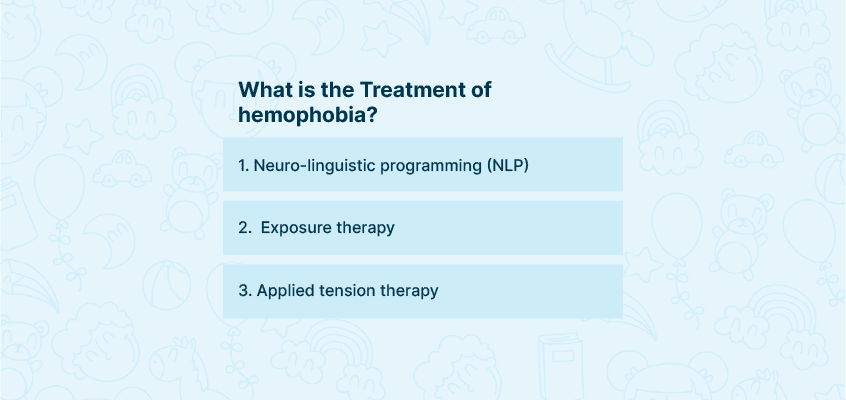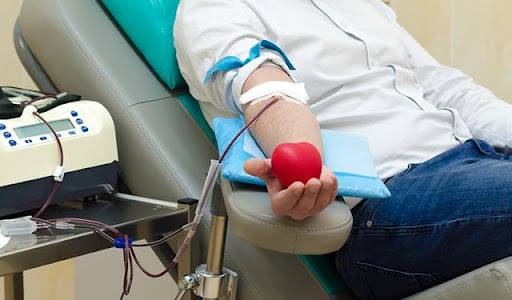Introduction
Fear can be related to a specific situation or associated with other medical conditions. Just the thought of being around blood or looking at it can make an individual extremely stressed. Such behavior can be an effect of a previous traumatic experience involving blood. With little effort and assistance, you can get rid of this phobia and continue your everyday life.
Our Wellness Programs
What is hemophobia?
Hemophobia is an excessive and irrational fear of blood. It is a specific type of phobia. In severe cases of this phobia, an individual may experience physical reactions in their body and collapse or faint. In general, people experiencing hemophobia feel uneasy even at the thought of being around blood. The sight of it can make them extremely stressed. Individuals who have this phobia feel sick at the idea of having to undergo any medical procedure that involves blood. Hemophobia is distinct from most people’s natural fear of blood. It is a severe aversion to blood or being in any situation where blood may be present.

Looking for services related to this subject? Get in touch with these experts today!!
Experts

Kirti Bajpai

India
Psychologist
Experience: 5 years

Neelam Parwani

India
Life Coach
Experience: 5 years

Mansi Chawla

India
Psychologist
Experience: 12 years

Sapna Zarwal

India
Psychologist
Experience: 19 years
What are the Symptoms of hemophobia?
When someone See blood in reality or virtually, such as in movies, it may trigger the symptoms of hemophobia. Simple medical procedures such as blood tests trigger anxiety and fear in the people living with this phobia.
- Individuals suffering from this condition avoid blood situations, such as boxing, watching horror or action movies, taking blood tests, or visiting hospitals.
- They may become anxious if they are about blood.
- They worry about thinking about the activities they may have to do with blood.
- Physiological symptoms vary in severity. They include trouble breathing, increased heart rate and blood pressure, pain in the chest or tightness, and sweating.
- Short breath, dry mouth, and headaches may also accompany these symptoms.
- Hemophobic people instinctively want to escape the sight of blood.
- They may even faint if they cannot escape the scene.
What are the Causes of hemophobia?
- A child may suffer from a painful injury or a traumatic event in their early days, due to which they become anxious at the sight of blood.
- Adults can develop hemophobia later in life due to a traumatic experience that involves significant blood loss.
- Hemophobia may be related to having a dysfunctional Amygdala, a small section of the brain responsible for fear processing. Genetics affect the amygdala and the way the brain processes fear.
- A child may witness a family member show an extreme reaction to blood and unknowingly adopt such a response.
- A hemophobic individual may also have a family history of this phobia.
- The internal graphic representation of blood may induce fear in a person.
- Fear of being infected with blood-related diseases like AIDS, hepatitis, etc., can also develop this condition.
- Sometimes, this fear may not have any underlying cause.
What is the Treatment of hemophobia?
- Cognitive-behavioral therapy: The therapist gradually exposes the sufferer to situations that cause the phobic attack. It helps to change their perspective on phobia, cope with bodily responses, and deal with the emotional impact. The therapist works with the individual to challenge and reframe the sufferer’s negative thoughts.
- Exposure therapy: The therapist exposes the hemophobic person to situations that trigger a phobic attack. It may involve visualizing exercises or exposing the individual to blood in a guided and safe environment. The therapist helps the individual gradually expose their mind to reality and eventually see blood without getting affected.
- Applied tension therapy involves training the affected person to tense their legs, arms, and abdomen to apply pressure on their muscles when exposed to fear. It can help prevent fainting.
- Relaxation therapy: The affected person can use relaxation techniques such as breathing exercises, meditation, visualization exercises, and yoga. These techniques can help people manage the stress and symptoms associated with their phobia.
How many people have hemophobia?
Phobias are one of the most common mental disorders in the U.S., according to the National Institute of Mental Health (NIMH). Approximately 10% of people in the U.S. have specific phobias. An analysis conducted in 2014 estimated that hemophobia has a prevalence of 3–4% in the general population, meaning it is relatively standard.
Types of hemophobia
Hemophobia is a broad term frequently associated with other fears that include blood.
- Medical needle phobia (Trypanophobia)
- Hospital phobia (Nosocomephobia)
- Doctor phobia (Nosocomephobia)
- Dentist phobia (Dentophobia)
The sight of someone else’s blood can trigger mysophobia. There is a fear of germs in those highly afraid of contracting a disease. Sometimes, the fear of blood stimulates the fear of pain (algophobia) and death (thanatophobia).
Test for hemophobia
Make an appointment with your physician if you are experiencing signs and symptoms of hemophobia or if your fear of blood interferes with your ability to live a whole life. A screening test by a doctor or a specialist can confirm this condition. Simply tell your doctor about your symptoms and how long you have been suffering from them. You should not be anxious about the diagnosis as it does not require the use of needles or any medical equipment. Only your medical, psychiatric, or social history may be required by your doctor in making an accurate diagnosis.
How to deal with patients with hemophobia?
Some techniques to pacify hemophobic individuals during a phobic attack are listed below:
- Distraction technique: Help the individual focus on something else or engage them in an activity to divert their attention from a thought or a situation involving blood.
- Talk to the patient to gain their confidence.
- Ask them to read a book.
- Ask them to play games online.
- Make the patient listen to music. It will help them relax and ease their mind.
- Make a friend or a family member talk to the patient.
- Visualization technique: Visualizing a situation that evokes a feeling of calmness can be beneficial for those with hemophobia.
- Ask the patient to visualize a peaceful scene in mind and imagine being a part of it.
- Ask the patient to think of a happy, stress-free place, like a park or a beach.
- The relaxation technique helps calm the mind and body in heightened anxiety levels. Ask the patient to close their eyes, take a deep breath, and slowly exhale.
- The patient can also challenge their negative thoughts by reminding them that a blood test is a standard procedure and that many other people go through it regularly and face no problems.
Conclusion
Overall, hemophobia is a relatively easy fear to cure and eliminate. If needed, you can seek help from United We Care. It is an online mental health well-being and therapy platform that offers professional advice on combating emotional and mental challenges.












